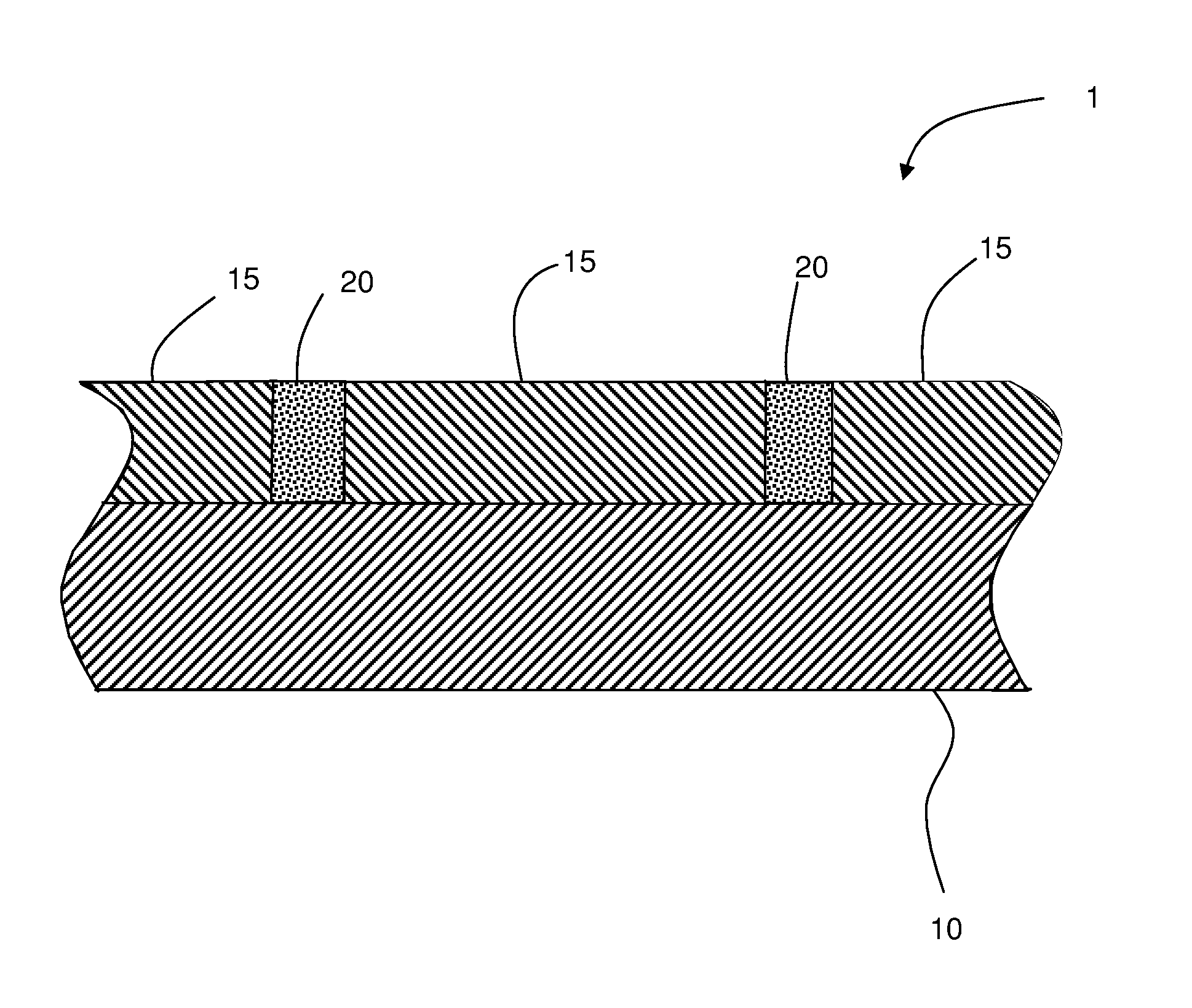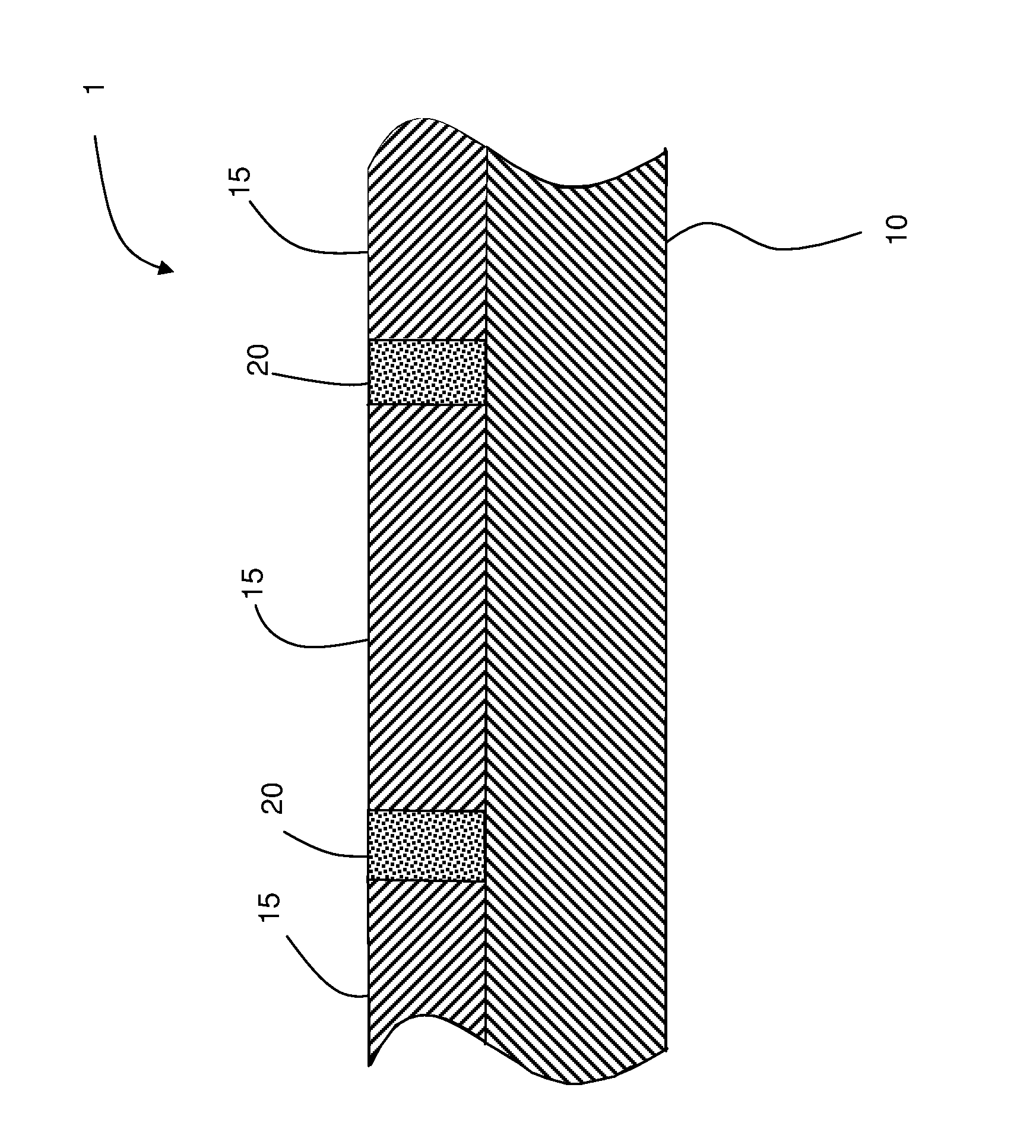Carbon phenolic ablative gap filler
- Summary
- Abstract
- Description
- Claims
- Application Information
AI Technical Summary
Benefits of technology
Problems solved by technology
Method used
Image
Examples
example 1
[0038]A test sample was prepared by attaching three PICA ablative tiles to a carbon-resin composite substrate with adhesive in a configuration so as to provide a T-joint shaped gap line between the three tiles. A temporary border was placed around the outside edge of the test sample in order to retain material with which the gaps would be filled, and the top surface of the PICA tiles was covered with a protective tape, and a powder composition containing 40% by weight phenolic resin, 40% carbon fibers, and 20% phenolic microballoons was poured into the gaps along the gap line. Voids in the powder fill in the gaps were manually by physical manipulation with a pick, and additional powder composition was packed into the gaps, resulting in a density of powder composition in the gaps (measured by dividing total mass of powder disposed into the gaps by the calculated gap volume) of 0.45 g / cm3. The initial total loose volume of powder composition was about 120% of the final packed volume. ...
example 2
Sample 1
[0039]A test sample was prepared by attaching a commercially-available fiberglass phenolic flexible core honeycomb material to an aluminum plate substrate with adhesive. The surface of fiberglass phenolic core was treated with a 10% solution of phenolic resin and dried. A powder composition containing 40% by weight phenolic resin, 40% carbon fibers, and 20% phenolic microballoons was poured and packed into the honeycomb cells, and the test sample was baked to cure the powder composition. The test sample was subjected to arc jet testing at Boeing Technological Services Large Core Arc Tunnel (LCAT) facility using a conventional shear specimen configuration. The results showed excellent ablative performance and cohesiveness of the cured powder composition, and generally good adhesion of the cured powder composition to the fiberglass phenolic core.
Sample 2
[0040]A second test sample was prepared by attaching a commercially-available fiberglass phenolic flexible core honeycomb mat...
PUM
| Property | Measurement | Unit |
|---|---|---|
| Temperature | aaaaa | aaaaa |
| Temperature | aaaaa | aaaaa |
| Fraction | aaaaa | aaaaa |
Abstract
Description
Claims
Application Information
 Login to View More
Login to View More - R&D Engineer
- R&D Manager
- IP Professional
- Industry Leading Data Capabilities
- Powerful AI technology
- Patent DNA Extraction
Browse by: Latest US Patents, China's latest patents, Technical Efficacy Thesaurus, Application Domain, Technology Topic, Popular Technical Reports.
© 2024 PatSnap. All rights reserved.Legal|Privacy policy|Modern Slavery Act Transparency Statement|Sitemap|About US| Contact US: help@patsnap.com









